The play "Aspiration for the Country" (scriptwriter: Van Trong Hung; adaptation author: Doan Thanh Tam, director: People's Artist Hoai Hue) depicts the image of Tang Bat Ho (1858-1906) - an outstanding son of Binh Dinh homeland in the anti-French movement in the late 19th and early 20th centuries.
Patriotic song
Watching the play, viewers were captivated right from the opening scene with the scene of Tang Bat Ho reading the Can Vuong Proclamation in the middle of the Kim Son mountains and forests, calling on patriotic insurgents to rise up against the French.
All the insurgent forces under his leadership prepared to attack Hoai Nhon palace - opening the door for the "Aspirations for the country" and the heroic struggle for independence and national renewal.
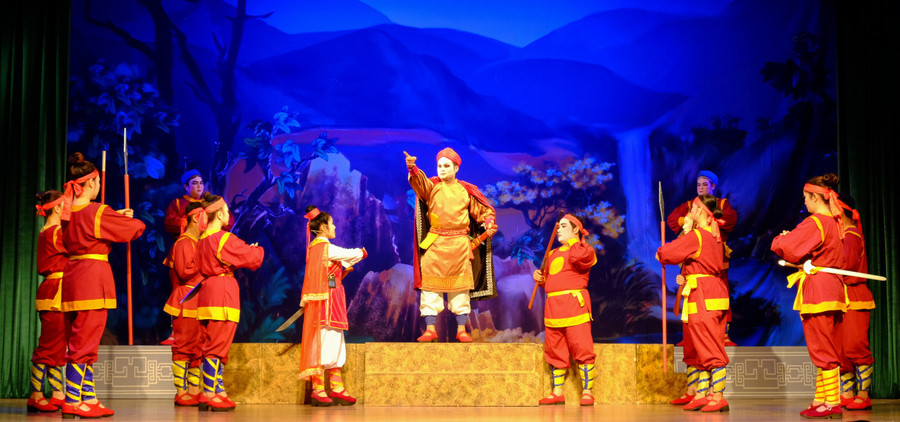
The play recreates the arduous but bright journey of Tang Bat Ho's self-reliance - a journey of nearly 30 years from the Central region to the North and then to Thailand, China, Russia, Japan, carrying with him a strong belief in the day the country becomes independent - captivating and moving the audience with the dramatic layers and scene transitions on stage.
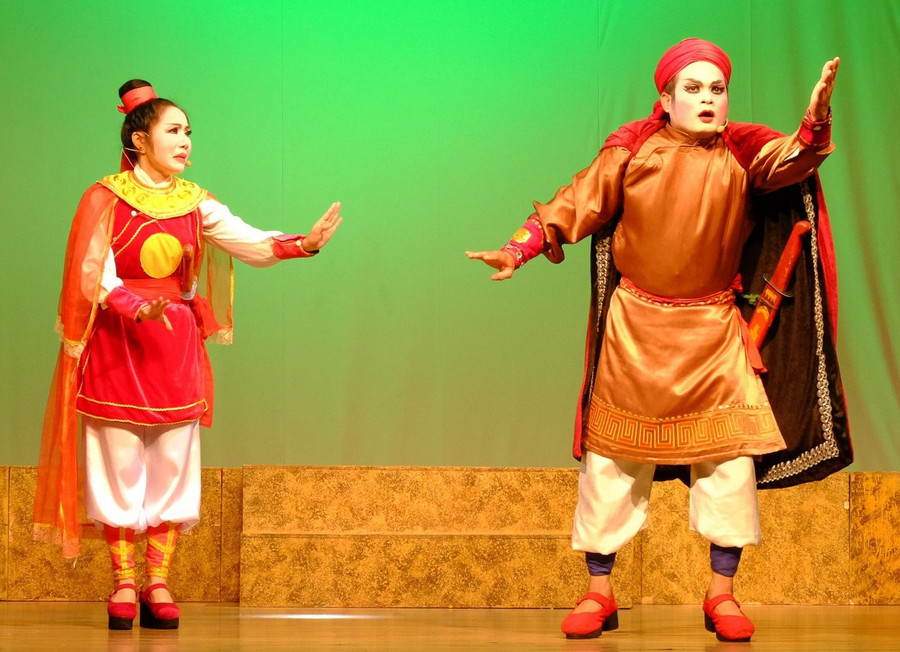
According to director Hoai Hue, he wanted to convey in Khat Vong Non Song not only the story of a patriot, but also the aspiration to live and contribute of Vietnamese people of all times.
During the rehearsal, the audience was silent many times while watching the tragic journey of the patriot of the land of Vo. Artist Thai Phien - who played the role of Tang Bat Ho - portrayed the character through many emotional levels.
“With the role of Tang Bat Ho, I tried to portray the inner self to highlight the spirit of a hero who was not only a sword-wielding warrior but also a revolutionary with a vision beyond his time. I wanted to portray him as both strong and profound - a man who loved his country with intelligence and humanity,” shared artist Thai Phien.
Besides the positive roles, the dialogues and performances of the negative characters: Nguyen Than (played by artist Thai Anh), Phan Thanh (played by Meritorious Artist Duc Khanh), Phan Tung (played by Meritorious Artist Duc Thanh)... also create attraction, increase drama interwoven in situations, making an impression on the audience.
Creative colors
People's Artist Hoai Hue shared: "The art of hát bội is inherently scholarly, and the stage is conventional, but I use the curtain - a traditional technique on the hát bội stage that is both conventional and realistic, and use lighting and music techniques to "bridge" the transition between the stage spaces, making the plays more emotional, engaging, and appealing to the audience."
The combination of traditional opera language and modern dances also creates a unique feature for the play. The scenery is flexibly changed, sometimes it is the Kim Son mountains and forests - where the insurgents gathered, sometimes it is the scene in the Japanese royal palace, sometimes it is the misty Huong River - where the patriot Tang Bat Ho breathed his last...
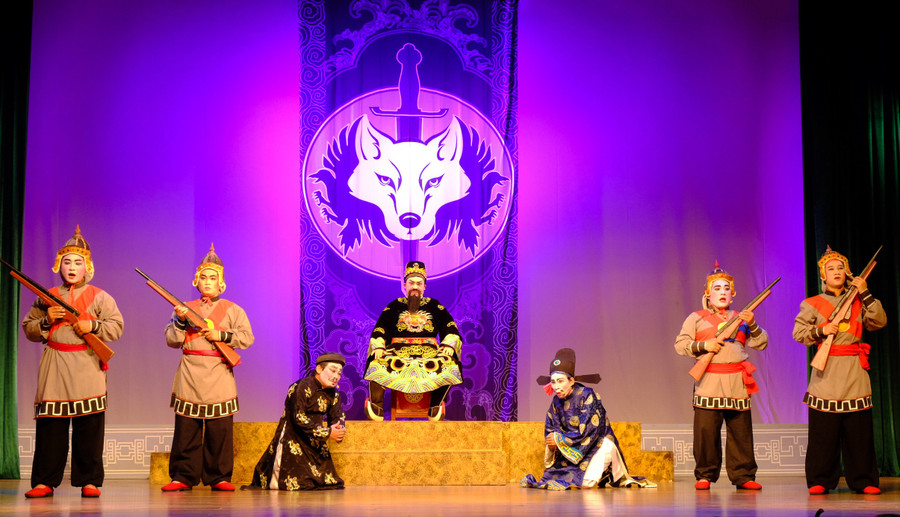
As the person in charge of choreography for the play Khat vong non song, artist Kim Tien said: “Not only preserving the traditional art of Hat Boi dance, I also choreographed many Japanese dance movements to express the plays when Tang Bat Ho went to Japan, initiating the Dong Du movement. There are scenes that do not need words, just a few dance movements are like the expressive language of the character's inner feelings on stage.”
Music also contributes significantly to the success of the play, many layers of the play reach their climax thanks to the delicate support of the orchestra; the songs sung behind the scenes make the play even more sublime.
Taking on the role of music composer and orchestra conductor, Meritorious Artist Dao Trung Nghia said: “I spent a lot of effort researching the music in Khat vong non song, mixing musical materials from Binh Dinh folk songs, combined with newly composed melodies closely related to the characters' psychology; including songs of "hat vong".
When Tang Bat Ho left, the sound of war drums mixed with the beat of gongs stirred up the hearts of the people. When he was in a foreign land, the melody was quiet, with a touch of Japanese music so that the audience could clearly feel the journey of a Vietnamese person crossing cultural borders...".
Source: https://baogialai.com.vn/chi-khi-tang-bat-ho-trong-khat-vong-non-song-post571670.html








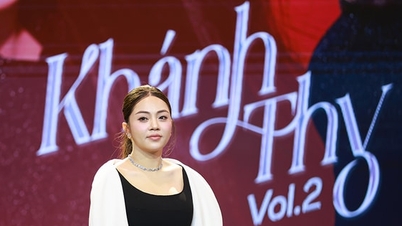



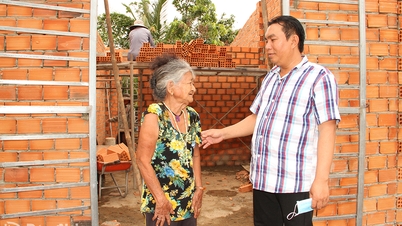
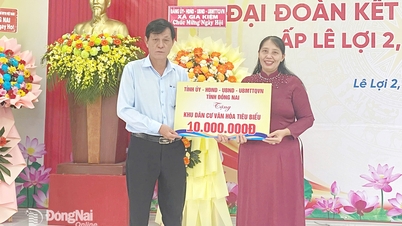

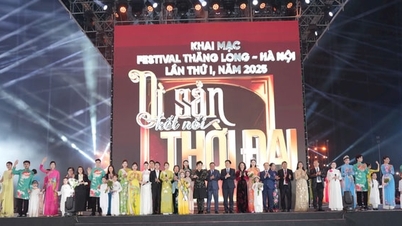




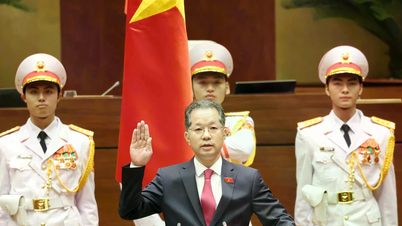









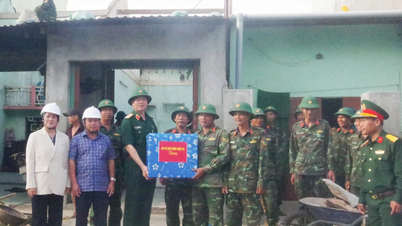
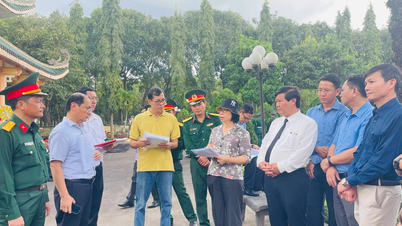


























































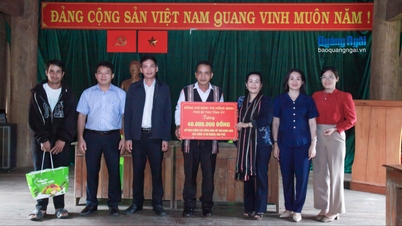








![Dong Nai OCOP transition: [Article 3] Linking tourism with OCOP product consumption](https://vphoto.vietnam.vn/thumb/402x226/vietnam/resource/IMAGE/2025/11/10/1762739199309_1324-2740-7_n-162543_981.jpeg)













Comment (0)